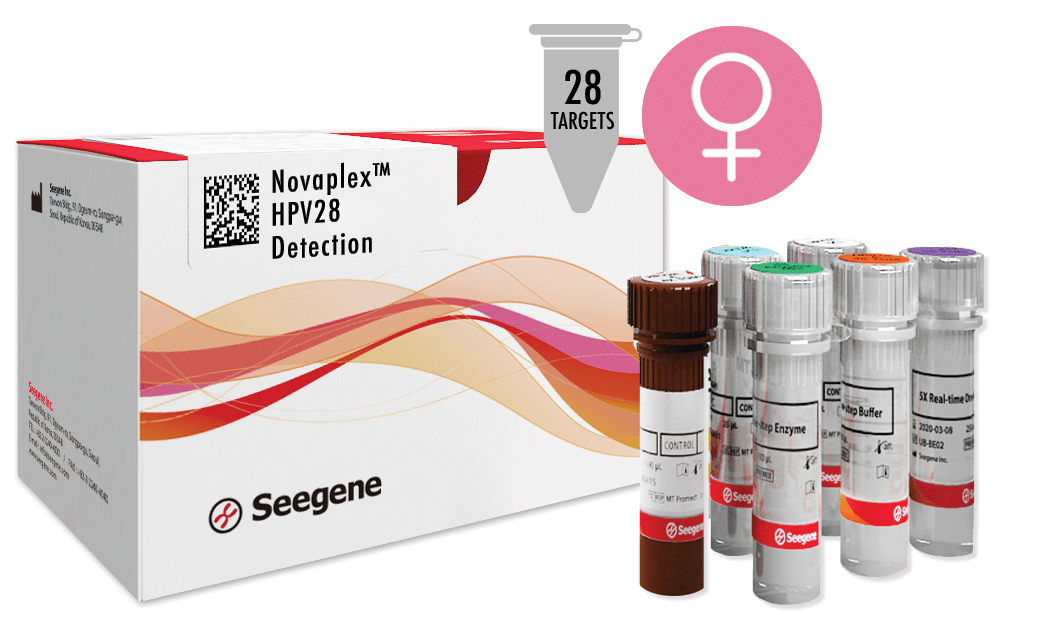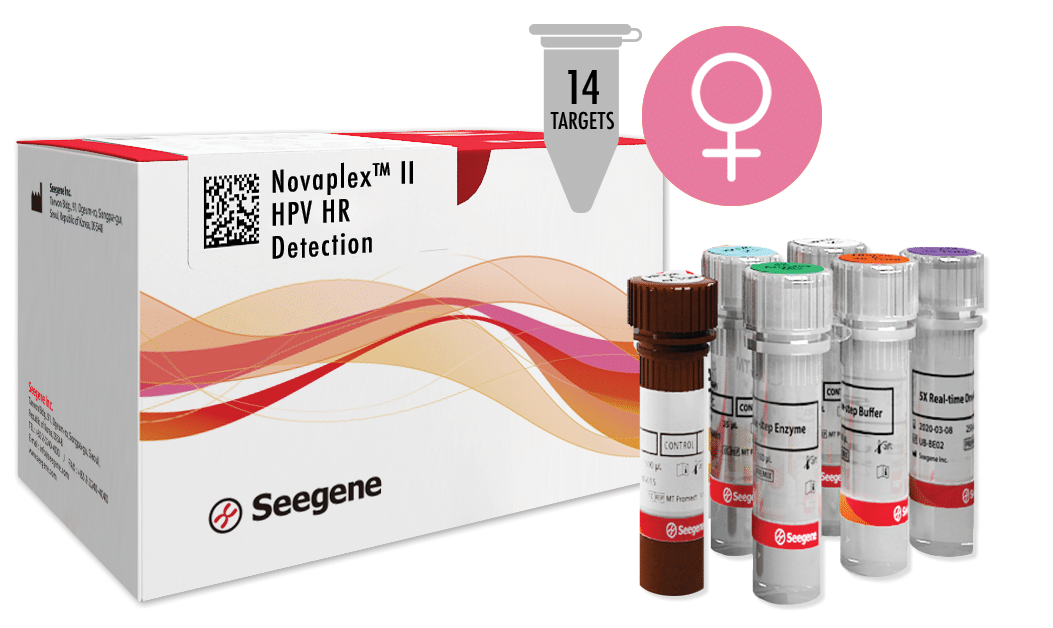
HPV (the virus): CDC estimates that there were 43 million HPV infections in 2018. In that same year, there were 13 million new infections. HPV is so common that almost every sexually active person will contract HPV at some point if they don’t get vaccinated.1
-
Analytes High risk types:
- HPV16, HPV18, HPV26, HPV31, HPV33, HPV35, HPV39, HPV45, HPV51, HPV52, HPV53, HPV56, HPV58, HPV59, HPV66, HPV68, HPV69, HPV73, HPV82
- HPV6, HPV11, HPV40, HPV42, HPV43, HPV44, HPV54, HPV61, HPV70
-
Analytes
- HPV66, HPV51, HPV33, HPV56, HPV45, HPV59, HPV39, HPV35, HPV68, HPV58, HPV16, HPV52, HPV18, HPV31
Cervical sample
Self-collected vaginal sample
Automated Extraction & PCR Setup
Seegene NIMBUS
Seegene STARlet
Real-time PCR
CFX96™ Real-time PCR Detection System (Bio-Rad)
CFX96™ Dx (Bio-Rad)
CFX96™ Touch (Bio-Rad)
CFX96™ Opus (Bio-Rad)
Seegene Viewer Software
- Quick and easy data analysis and interpretation
- Interface specialized for multiplex testing
- Genotyping of 28 HPV types in a single reaction
- Multiplex real-time PCR with high sensitivity and specificity by utilization of DPO™ and TOCE™ technologies
- Internal Control as an endogenous whole process control in order to monitor nucleic acid isolation and check for PCR inhibition
- HPV analysis by cyclic-CMTA (Catcher Melting Temperature Analysis)
- Comprehensive individual genotype results and Ct values in a single test
Human papillomavirus (HPV) is known to be the leading cause of cervical cancer in women. Although more than 200 HPV types have been identified, only certain types, such as 16 and 18, are major risk factors for cervical cancer. It has recently been recognized that co-infection of high-risk and low-risk HPV affects cancer severity and progression.2 In addition, long-term monitoring studies are showing the benefits from HPV vaccination.
HPV can cause cervical and other cancers, including cancer of the vulva, vagina, penis, or anus. It can also cause cancer in the back of the throat (oropharyngeal cancer). This can include the base of the tongue and tonsils. Cancer often takes years, even decades, to develop after a person gets HPV. In most cases (9 out of 10), HPV goes away on its own within two years without any health problems. But when HPV does not go away, it can cause health problems like genital warts and cancer. Genital warts and cancers result from different types of HPV.
Cervical cancer: Every year, nearly 12,000 women living in the U.S. will have cervical cancer. More than 4,000 women die per year from cervical cancer.
Novaplex™ HPV28 Detection* are designed to identify 19 high risk and/or 28 unique low and high-risk HPV types in a single specimen including those that are known to cause cervical cancer.
Novaplex™ HPV HR Detection* is suitable for HPV detection in all circumstances, meeting diverse region-specific identification needs. It allows more efficient turnaround time and fully automated workflow and is designed to provide comprehensive information.
*All Novaplex™ products are for Research Use Only. Not for use in diagnostic procedures.
1 STD Facts - Human papillomavirus (HPV). Centers for Disease Control and Prevention. (2022). Retrieved from https://www.cdc.gov/std/hpv/stdfact-hpv.htm 2 Burd E. M. (2003). Human papillomavirus and cervical cancer. Clinical microbiology reviews, 16(1), 1–17. https://doi.org/10.1128/CMR.16.1.1-17.2003 https://www.ncbi.nlm.nih.gov/pmc/articles/PMC145302/# Blog: https://seegeneus.com/celebrate-dna-day/


